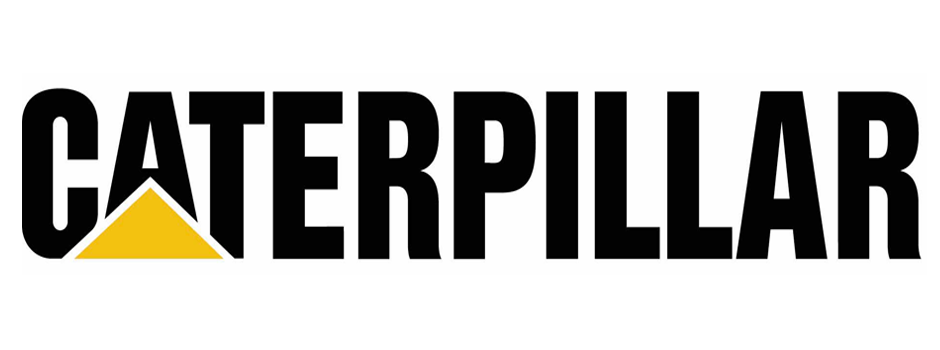Cost Volume Profit Analysis: Definition, Objectives, Assumptions, Limitations

A high CM ratio and a low variable expense ratio indicate low levels of variable costs incurred. CVP Analysis can be used by managers to help them decide on pricing policies, output levels, cost control strategies, and capital investments. It provides important information about how changes in costs and other factors will affect profitability as well as helps managers identify breakeven points for budgeting purposes. In other words, the large widgets generate a higher
contribution margin per hour on the machine that constitutes the capacity
constraint of the factory.
- These are simplifying, largely linearizing assumptions, which are often implicitly assumed in elementary discussions of costs and profits.
- The variable cost is the cost to make the sandwich (this would be the bread, mustard, and pickles).
- In addition, assumptions made surrounding the treatment of semi-variable costs could be inaccurate.
- The company was providing small pizzas that cost almost as much to make and just as much to deliver as larger pizzas.
These components involve various calculations and ratios, which will be broken down in more detail in this guide. Costs and sales can be broken down, which cost volume profit meaning provide further insight into operations. For instance, simple CVP analysis is automatically updated in PDF presentation in real-time through Datarails.
It’s why the ice cream truck doesn’t charge $50,000 for the first ice cream cone it ever sells. More often than not, the total contribution margin is the number used for income statements. Cost-Volume-Profit (CVP) Analysis, also known as Break-even Analysis, is a way of understanding the relationship between a business costs, the volume of good or sales they need to make and any potential profit.
What is the approximate value of your cash savings and other investments?
CVP simplifies the computation of breakeven in break-even analysis, and more generally allows simple computation of target income sales. It simplifies analysis of short run trade-offs in operational decisions. In conjunction with other types of financial analysis, leaders use this to set short-term goals that will be used to achieve operating and profitability targets. Contribution margin is the amount by which revenue exceeds the variable costs of producing that revenue. CVP analysis shows the relationships among a business’s costs, volume, and profits. This is best illustrated by comparing two companies with identical sales and profits but with different cost structures.
The break-even point (BEP), in units, is the number of products the company must sell to cover all production costs. Similarly, the break-even point in dollars is the amount of sales the company must generate to cover all production costs (variable and fixed costs). This includes that CVP analysts face challenges when identifying what should be considered a fixed cost and what should be classified as a variable cost. Once seemingly fixed costs, such as contractual agreements, taxes, rents can change over time. In addition, assumptions made surrounding the treatment of semi-variable costs could be inaccurate.
Cost Volume Profit Analysis: Meaning, Assumption, Techniques
Once sales estimates become somewhat reasonable, it then becomes just a matter of number crunching and optimizing the company’s profitability. It is quite common for companies to want to estimate how their net income will change with changes in sales behavior. For example, companies can use sales performance targets or net income targets to determine their effect on each other. In order to properly implement CVP analysis, we must first take a look at the contribution margin format of the income statement. Cost–volume–profit (CVP), in managerial economics, is a form of cost accounting. It is a simplified model, useful for elementary instruction and for short-run decisions.
Sylvamo Quarterly Results Meet Guidance – Business Wire
Sylvamo Quarterly Results Meet Guidance.
Posted: Wed, 09 Aug 2023 11:00:00 GMT [source]
The point where the total costs line crosses the total sales line represents the breakeven point. This is the point of production where sales revenue will cover the costs of production. It represents the incremental money generated for each product/unit sold after deducting the variable portion of the firm’s costs. Basically, it shows the portion of sales that helps to cover the company’s fixed costs.
How Is Cost-Volume-Profit (CVP) Analysis Used?
Perhaps the greatest danger lies in relying on simple CVP analysis when a manager is contemplating a large change in volume that lies outside of the relevant range. However, the higher the number, the higher the risk, because a higher DOL also means that a 1% decrease in sales will cause a magnified, larger decrease in net income, ultimately decreasing its profitability. In addition, companies may also want to calculate the margin of safety. This is commonly referred to as the company’s “wiggle room” and shows by how much sales can drop and yet still break even. Therefore, to earn at least $100,000 in net income, the company must sell at least 22,666 units. Datarails is a budgeting and forecasting solution that integrates such spreadsheets with real-time data.

Kevin has edited encyclopedias, taught history, and has an MA in Islamic law/finance. He has since founded his own financial advice firm, Newton Analytical. Each column represents a different scenario, with the first column showing the base case and the remaining columns providing answers to the three questions posed by management. When performing CVP analysis, it is important to consider the accuracy of these simplifying assumptions. This results in an answer of the amount of monthly sales needed to achieve this profit. The formula to find the break-even point in sales dollars is as follows.
Contribution margin analysis
Through research, you discover that you can sell each sandwich for $5. The most common application of CVP by financial planning and analysis (FP&A) leaders is performing break-even analysis. Put most simply, break-even analysis is calculating how many sales it takes to pay for the cost of doing business reaching a breakeven point (neither making nor losing money).
Cost volume profit, explained below, is one of the many ways to measure changes in the financial health of a company as it relates to sales. A CVP model is a simple financial model that assumes sales volume is the primary cost driver. In order to create a CVP model, you need certain data for the fiscal period in question. You need an estimate or figure for fixed costs, unit-level variable costs, and product/unit sales prices. Once profit is set to zero, fill in the appropriate information for selling price per unit (S), variable cost per unit (V), and total fixed costs (F), and solve for the quantity of units produced and sold (Q).
The cost volume profit chart, often abbreviated CVP chart, is a graphical representation of the cost-volume-profit analysis. In other words, it’s a graph that shows the relationship between the cost of units produced and the volume of units produced using fixed costs, total costs, and total sales. It is a clear and visual way to tell your company’s story and the effects when making changes to selling prices, costs, and volume. The cost-volume-profit analysis, also commonly known as breakeven analysis, looks to determine the breakeven point for different sales volumes and cost structures, which can be useful for managers making short-term business decisions. CVP analysis makes several assumptions, including that the sales price, fixed and variable costs per unit are constant.

CVP analysis endeavors to analyze the relationship between volume change and cost changes. Cost determines the selling price to be fixed for arriving at the desired level of profit; the selling price and quantity sold directly affect the volume of production, and cost depends on the volume of production. Cost categories that are typically included in a CVP analysis include fixed costs, variable costs, direct materials, direct labor, and overhead expenses.
This conveys to business decision-makers the effects of changes in selling price, costs, and volume on profits (in the short term). CVP analysis is only reliable if costs are fixed within a specified production level. All units produced are assumed to be sold, and all fixed costs must be stable in CVP analysis. By using a special type of income statement that has been reformatted to group together your business’s fixed and variable costs.
Datarails integrates fragmented workbooks and data sources into one centralized location. This allows users to work in the comfort of Microsoft Excel with the support of a much more sophisticated but intuitive data management system. Being plugged into your financial reports ensures this valuable data is updated in real-time.
Luminar Reports Strong Second Quarter 2023 Business Update and … – Kentucky Today
Luminar Reports Strong Second Quarter 2023 Business Update and ….
Posted: Tue, 08 Aug 2023 20:00:20 GMT [source]
This point can be calculated using CVP Analysis and is used to assess the viability of a project or product line, as well as determine what level of output must be achieved in order to make a desired return on investment (ROI). Profit may be added to the fixed costs to perform CVP analysis on the desired outcome. For example, if the previous company desired a profit of $50,000, the necessary total sales revenue is found by dividing $150,000 (the sum of fixed costs and desired profit) by the contribution margin of 40%. Assume that the financial statements for Lillian’s Bakery indicate that the bakery’s fixed costs are $49,000, and its variable costs per unit of production (loaf of raisin coffee cake) are $.30.
These are linear because of the assumptions of constant costs and prices, and there is no distinction between units produced and units sold, as these are assumed to be equal. Note that when such a chart is drawn, the linear CVP model is assumed, often implicitly. In the above graph, the breakeven point stands at somewhere between 2000 and 3000 units sold. For FP&A leaders this method of cost accounting can be used to show executives the margin of safety or the risk that the company is exposed to if sales volumes decline.

